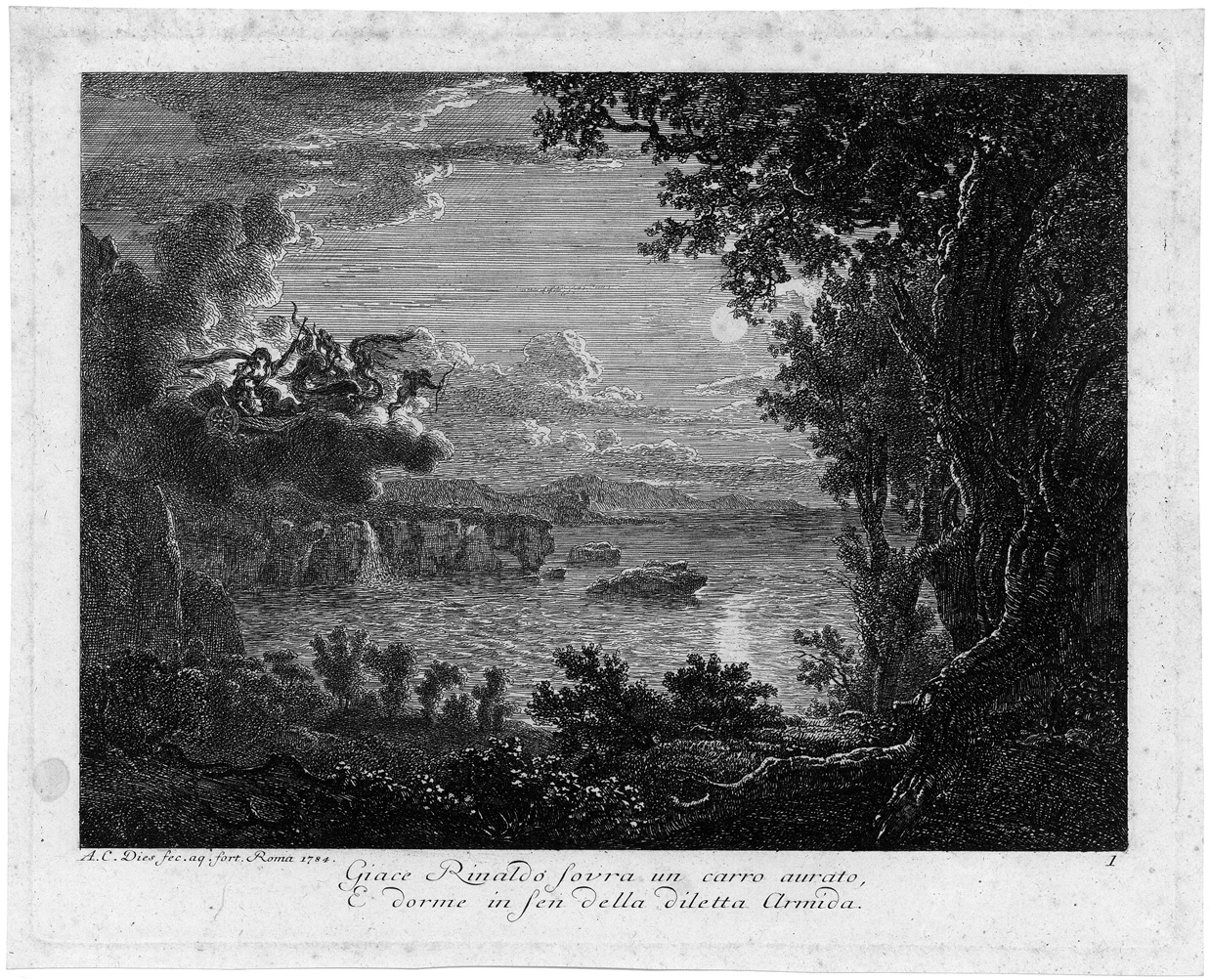Loading the page ...
Albert Christoph Dies
(1755 Hannover – 1822 Vienna)
“Landscapes with Armida and Medea Soaring Aloft”. Two etchings. 21.6 x 26.9 cm. 1784; 1792. Andresen 1–2 II.
These two very rare and marvellously atmospheric etchings, although produced at different times, should be seen as pendants and are considered to be the earliest examples of Albert Christoph Dies’ activity as an etcher. After years of study in Düsseldorf, Mannheim and Basle, the artist arrived in Rome in the summer of 1775, where he was to live and work until 1796. Dies, who had landed in Rome with a modest stipend of thirty ducats but without any knowledge of Italian, faced an uphill task at the outset. His initial efforts were in the field of landscape painting, although he had hardly any experience in the genre. During the first years of his stay in Rome he earned his living by assisting Giovanni Volpato with the colouring of line engravings, while at the same time working intensively from nature, which he studied on his walks through the Roman Campagna.
As an etcher, Dies is chiefly known for the series Malerisch radirte Prospecte aus Italien (Painterly Etched Views of Italy), produced together with his painter friends Johann Christian Reinhart and Jacob Wilhelm Mechau, which was published by Frauenholz in Nuremberg between 1792 and 1798 (Andresen 52–75). These two early night pieces, which are based on two painted compositions by the artist, reveal a skilled etcher with a superb mastery of the technique of stage biting, who seemingly effortless is able to translate the tonal values and chiaroscuro of his paintings into the black-and-white medium. While the prevailing mood of the nocturnal scene with Rinaldo and Armida is lyrical in the manner of Claude Lorrain, the intimate depiction of Medea is striking for the dramatic intensity of the storm which lights up the sky with flashes of lightning and makes the whole landscape shudder. Stylistically this latter work chiefly recalls the landscape etchings of Crescenzio Onofri, who had been active in Rome a century earlier, although Dies’ drawing style is more refined and his hatching technique far more subtle.
Not only was Dies a recognized artist in his lifetime, but he also possessed considerable musical talents. In Vienna, where he had settled in 1797, he enjoyed the patronage of Prince Esterhazy. Here, too, he made the acquaintance of Joseph Haydn, and after the latter’s death he wrote one of the first biographies of the composer, which was published in 1810.
Superb, contrasting impressions with margins around the distinct platemark. Slight foxing, otherwise in extremely fresh and untreated condition.
